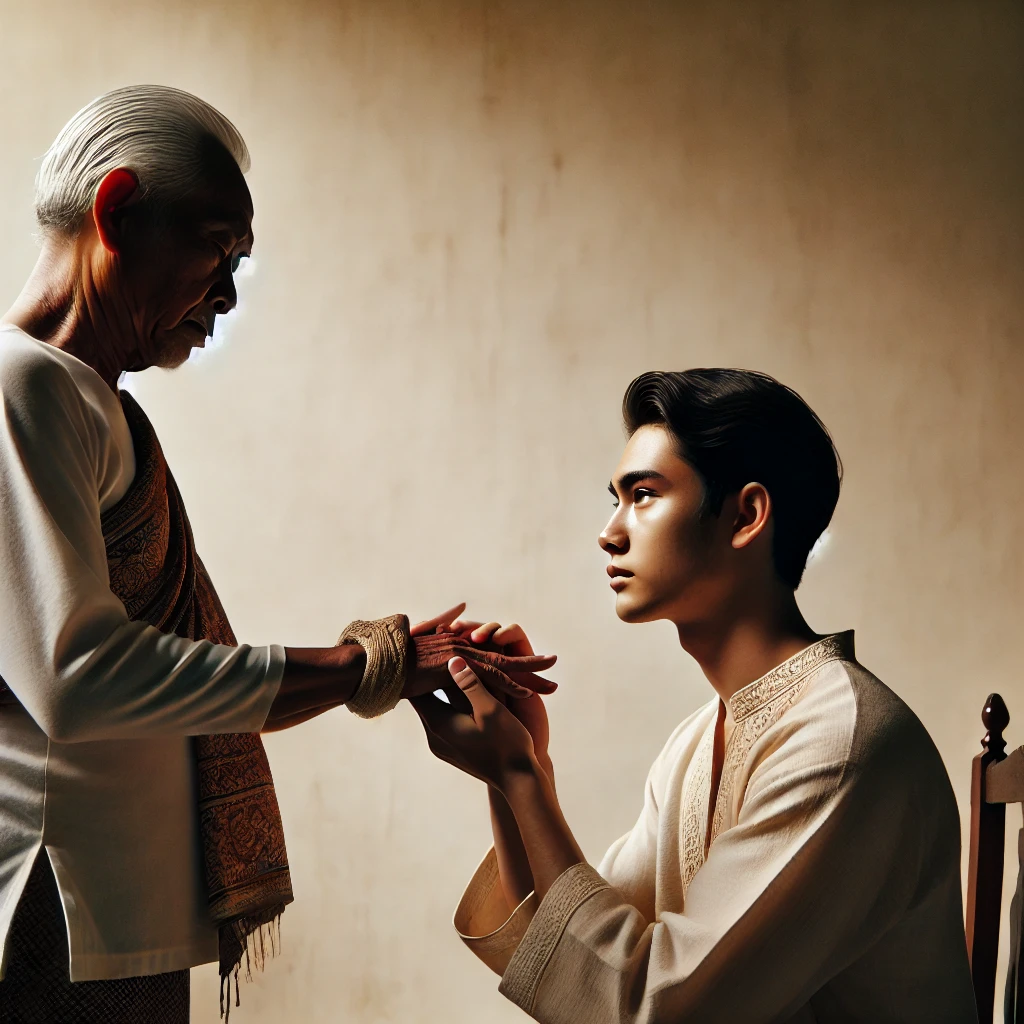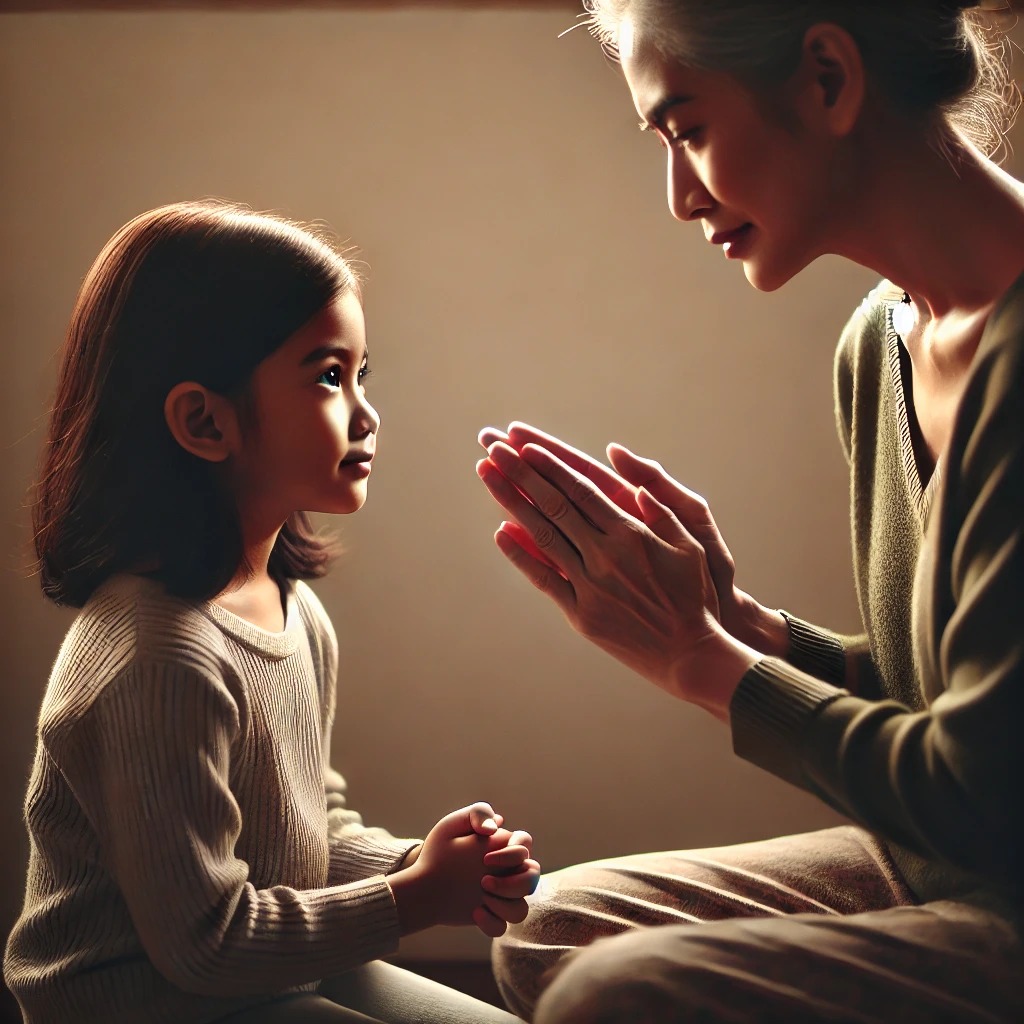Mano Po, a traditional Filipino gesture of respect, has been an integral part of Philippine culture for centuries. This deeply ingrained custom involves a younger person taking the hand of an elder and gently pressing it to their forehead. The practice, which translates to “your hand, please” in English, is a powerful symbol of reverence, gratitude, and familial bonds. This blog post will delve into the rich history, cultural significance, and modern-day relevance of Mano Po, exploring its role in shaping Filipino values and social interactions.
The Origins of Mano Po
Historical roots
The origins of Mano Po can be traced back to pre-colonial Philippines, where respect for elders was a fundamental aspect of society. The gesture is believed to have evolved from ancient animistic practices, where people would touch sacred objects to their foreheads as a sign of reverence. Over time, this practice transformed into a way of showing respect to elders, who were considered living repositories of wisdom and knowledge.
Influences from other cultures
While Mano Po is uniquely Filipino, it shares similarities with respect gestures found in other Southeast Asian cultures. For instance, the Thai wai and the Cambodian sampeah involve pressing the palms together in a prayer-like position and bowing slightly. These parallels suggest a shared cultural heritage across the region, reflecting the interconnectedness of Southeast Asian societies throughout history.
Evolution through colonial periods
The practice of Mano Po persisted through various colonial periods in Philippine history. During the Spanish colonial era (1565-1898), the gesture became intertwined with Catholic practices, as Filipinos would often perform Mano Po when greeting priests or receiving blessings. The American colonial period (1898-1946) saw attempts to discourage traditional customs, but Mano Po remained resilient, continuing to be practiced in Filipino homes and communities.
The Cultural Significance of Mano Po
Embodiment of Filipino values
Mano Po encapsulates several core Filipino values, including:
- Respect for elders (paggalang sa nakatatanda)
- Filial piety (utang na loob)
- Humility (pagpapakumbaba)
- Family cohesion (pagkakaisa ng pamilya)
- Preservation of tradition (pagpapanatili ng tradisyon)
These values are deeply woven into the fabric of Filipino society, and Mano Po serves as a physical manifestation of their importance in daily life.
Social hierarchy and relationships
The practice of Mano Po plays a crucial role in reinforcing social hierarchies within Filipino families and communities. It serves as a visible reminder of the respect due to elders and authority figures, helping to maintain order and harmony in social interactions. The gesture also strengthens intergenerational bonds, fostering a sense of continuity and connection between younger and older family members.
Spiritual and religious aspects
In predominantly Catholic Philippines, Mano Po has taken on additional spiritual significance. The gesture is often performed when receiving blessings from priests or during religious ceremonies. This blending of traditional and Catholic practices exemplifies the syncretic nature of Filipino spirituality, where indigenous customs and imported religious beliefs coexist and intertwine.
The Proper Execution of Mano Po
Step-by-step guide
Performing Mano Po correctly is essential to convey genuine respect. Here’s a step-by-step guide to the proper execution of the gesture:
- Approach the elder with a slight bow
- Gently take their hand, with your right hand if possible
- Bring their hand to your forehead, allowing it to touch lightly
- Release their hand and step back slightly
It’s important to note that the entire gesture should be performed with reverence and sincerity, as a perfunctory or insincere Mano Po can be considered disrespectful.
Regional variations
While the basic form of Mano Po remains consistent across the Philippines, there are some regional variations in its execution:
| Region | Variation |
|---|---|
| Ilocos | The gesture is often accompanied by saying “Apo” (respected elder) |
| Cebu | Known as “amin,” it may involve kissing the elder’s hand instead of pressing it to the forehead |
| Mindanao | Some indigenous groups incorporate a slight bow or curtsy along with the hand gesture |
These regional differences reflect the diverse cultural landscape of the Philippines while maintaining the core essence of respect and reverence.
Mano Po in Modern Filipino Society
Generational perspectives
The practice of Mano Po has evolved over time, with different generations holding varying views on its relevance and importance:
| Generation | Typical Perspective |
|---|---|
| Elderly (70+) | Often view Mano Po as an essential tradition that must be preserved |
| Middle-aged (40-69) | Generally support the practice but may be more flexible in its application |
| Young adults (20-39) | Mixed views, with some embracing the tradition and others seeing it as outdated |
| Teenagers and children | Often taught the practice but may question its relevance in modern society |
These generational differences can sometimes lead to tension within families, as older members may insist on the practice while younger ones may feel uncomfortable or resistant.
Urban vs. rural practice
The prevalence and consistency of Mano Po practice can vary significantly between urban and rural areas in the Philippines. In rural communities, where traditional values and customs tend to be more deeply entrenched, Mano Po remains a common and expected practice. Urban areas, particularly in major cities like Manila, Cebu, and Davao, may see a more relaxed approach to the custom, with some families maintaining the tradition while others adopt more westernized greetings.
Impact of modernization and globalization
As the Philippines continues to modernize and engage with global culture, traditional practices like Mano Po face new challenges and adaptations:
- Influence of Western culture: Exposure to Western media and lifestyles has led some Filipinos to question or abandon traditional customs.
- Social media and digital communication: The rise of virtual interactions has changed the way people greet and show respect, potentially reducing opportunities for physical gestures like Mano Po.
- Changing family dynamics: With more Filipinos working abroad or in urban centers away from extended family, the frequency of Mano Po practice may decrease.
- Cultural preservation efforts: In response to these challenges, there have been initiatives to promote and preserve traditional customs, including Mano Po, in schools and cultural programs.
The Role of Mano Po in Filipino Diaspora Communities
Maintaining cultural identity abroad
For Filipino communities living abroad, Mano Po serves as an important link to their cultural heritage. The practice helps maintain a sense of Filipino identity and values, even as families adapt to new cultural environments. Many Filipino parents and grandparents living overseas make a concerted effort to teach and practice Mano Po with younger generations, seeing it as a way to instill respect and preserve their cultural roots.
Challenges in multicultural societies
Practicing Mano Po in multicultural societies can present unique challenges:
- Cultural misunderstandings: Non-Filipinos may misinterpret the gesture or find it unusual.
- Generational gaps: Filipino children raised abroad may feel disconnected from the practice or reluctant to perform it in public.
- Adapting to local norms: In some cultures, physical contact with elders may be seen as inappropriate, requiring Filipinos to navigate between their traditional practices and local customs.
- Blended families: In intercultural marriages, the practice of Mano Po may need to be explained and negotiated within the family context.
Despite these challenges, many Filipino diaspora communities have successfully maintained the practice of Mano Po, adapting it to their new cultural contexts while preserving its core meaning and significance.
The Psychological and Social Benefits of Mano Po
Fostering intergenerational connections
The practice of Mano Po plays a crucial role in strengthening bonds between generations within Filipino families. This physical gesture of respect creates moments of connection between younger and older family members, fostering a sense of belonging and continuity. Research has shown that such intergenerational interactions can have positive effects on both the younger and older participants, including:
- Improved emotional well-being for older adults
- Enhanced social skills and empathy in children and young adults
- Greater family cohesion and support networks
- Preservation and transmission of cultural knowledge and values
Promoting empathy and social awareness
The act of performing Mano Po encourages individuals, particularly young people, to be mindful of others and their place within the social hierarchy. This awareness can translate into broader social skills and emotional intelligence, including:
- Enhanced ability to read social cues and body language
- Greater sensitivity to the needs and feelings of others
- Improved conflict resolution skills
- Increased cultural competence and respect for diversity
These skills are increasingly valuable in today’s globalized world, where cross-cultural understanding and empathy are essential for personal and professional success.
Mano Po in Filipino Literature and Media
Representations in literature
Mano Po has been a recurring theme in Filipino literature, often used to symbolize respect, tradition, and generational conflicts. Notable works that feature or discuss the practice include:
- “Banaag at Sikat” (1906) by Lope K. Santos
- “The Woman Who Had Two Navels” (1961) by Nick Joaquin
- “Po-on” (1984) by F. Sionil José
- “Ilustrado” (2010) by Miguel Syjuco
These literary representations help to contextualize Mano Po within broader narratives of Filipino culture and history, exploring its significance and evolution over time.
Depictions in film and television
Filipino cinema and television have also incorporated Mano Po into their storytelling, often using the gesture to establish character relationships or highlight cultural tensions. Some notable examples include:
- The “Mano Po” film series (2002-2016), which explores various aspects of Filipino-Chinese culture
- “Ang Tanging Ina” (2003), a comedy that showcases traditional Filipino family dynamics
- “Himala” (1982), a classic Filipino film that depicts rural life and traditions
- Various teleseryes (soap operas) that regularly feature Mano Po in family scenes
These media depictions play a significant role in reinforcing the cultural importance of Mano Po and introducing it to younger generations of Filipinos.
Teaching Mano Po to Future Generations
Formal education initiatives
Recognizing the importance of preserving cultural traditions, some educational institutions in the Philippines have incorporated lessons on Mano Po and other traditional practices into their curricula. These initiatives often include:
- Cultural awareness classes in elementary and high schools
- Integration of traditional practices into values education programs
- Cultural demonstrations and workshops in schools and community centers
- Inclusion of Mano Po in Filipino language and culture courses for overseas Filipino children
By formalizing the teaching of Mano Po, these educational efforts aim to ensure that future generations understand and appreciate the gesture’s significance.
Family-based transmission
Despite formal educational efforts, the primary mode of transmitting the practice of Mano Po remains within the family unit. Parents and grandparents play a crucial role in teaching children the proper execution and meaning of the gesture. This family-based transmission often involves:
- Modeling the behavior for children from a young age
- Explaining the significance and history of the practice
- Encouraging children to perform Mano Po with relatives and family friends
- Reinforcing the importance of respect and tradition in daily life
The combination of family-based teaching and formal educational initiatives helps to ensure the continued practice and understanding of Mano Po among younger Filipinos.
Conclusion
Mano Po stands as a powerful symbol of Filipino culture, embodying core values of respect, humility, and family unity. As the Philippines continues to navigate the complex interplay between tradition and modernity, this ancient gesture remains a tangible link to the country’s cultural heritage. While challenges to its practice exist, particularly in urban and diaspora contexts, Mano Po continues to play a significant role in shaping Filipino social interactions and reinforcing intergenerational bonds.
The persistence of Mano Po in contemporary Filipino society speaks to its deep cultural resonance and adaptability. As families, educators, and cultural institutions work to preserve and transmit this tradition, they ensure that future generations of Filipinos will continue to have access to this profound expression of respect and cultural identity. In an increasingly globalized world, practices like Mano Po serve as important reminders of the unique cultural threads that weave together the fabric of Filipino society, both at home and abroad.
By understanding and appreciating the rich history and significance of Mano Po, we gain insight not only into Filipino culture but also into the universal human need for respect, connection, and tradition. As such, this simple yet powerful gesture continues to play a vital role in shaping the social and cultural landscape of the Philippines, bridging generations and preserving a unique aspect of Filipino identity for years to come.
Disclaimer: This article presents information on Mano Po based on available data up to 2017. Cultural practices may evolve over time, and more recent developments may not be reflected in this content. We encourage readers to seek updated information from authoritative sources. If you notice any inaccuracies in this article, please report them so we can correct them promptly.




